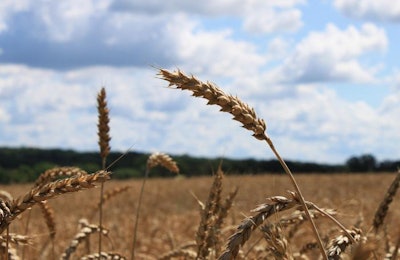
Wet spring weather in the U.S. has provided perfect conditions for mycotoxins such as deoxynivalenol (DON), T2-HT2 and zearalenone to develop in the wheat crop. Nine states have confirmed reports of DON in wheat, according to Neogen’s Mycotoxin Report from July 3.
The states reporting DON in wheat are:
- Alabama
- Texas
- Missouri
- Georgia
- Virginia
- Oklahoma
- Tennessee
- Kentucky
- Maryland
The winter wheat harvest is 41 percent complete, two points ahead of the five-year average. Sixteen percent of winter wheat is of poor to very poor quality, and 49 percent of good to excellent quality.
Spring wheat is 36 percent in the heading stage, but quality is low, with 28 percent in poor to very poor condition and 40 percent in good to excellent condition.
Corn and barley
Four percent of corn has reached the silking stage, one point below the five-year average. Eight percent of corn is in poor to very poor condition, and 67 percent is in good to excellent condition. Both numbers are three points worse than last year.
Lack of rain in the Dakotas is bringing down corn quality. Corn in Illinois and Indiana is also suffering to some degree, Neogen said.
Twenty-seven percent of barley is in the heading stage, which is five points below the five-year average. Twelve percent of barley is in poor to very poor condition, and 60 percent is in good to excellent condition.
Mycotoxins in animal feed can have various negative effects on livestock and poultry and can result in poor animal health. Some animals are more sensitive to certain mycotoxins than others.















